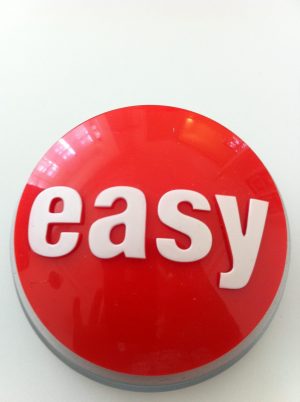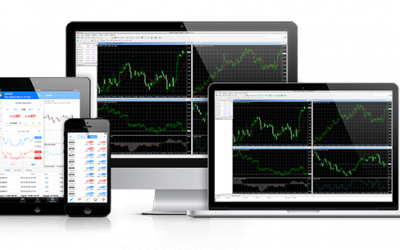Article content
As we begin our trading career, we are getting thousands of hints and tips like:
“You should make up a trading system. You won’t earn without it!”
This is the way pros are grunting at newbies. But wait a minute – what system are you talking about? We’ve just started trading! At the beginning, all the things like candles, indicators and levels – they are new to us. We are overwhelmed by both stress and delight with just the price having moved one pip up.
This story is for those who are new to trading. You will learn what “a system” is, and we’ll make up your first strategy. Right here in the article.
If you already have a system, this writing will be like a moment of nostalgia. And a couple of life hacks at the end!
What is a trading system?
A trading system (TS, a strategy, an approach) is your rules of trading. If there is ‘condition A’ at the market, and the price did ‘condition B’, you go ahead and open a trade.
Traders do check against their TS before making each trade. The number of conditions your system includes might be 3 or 10 – it’s up to you.
Why is the system necessary?
Sometimes things are very clear in the chart – no need to do any thinking. You can tell when to open a trade: there is a trend, an area, and there’s a green light from the indicator. Looks like any system is pointless if things are crystal clear anyway.
 Trading really seems so easy sometimes!
Trading really seems so easy sometimes!
You open a trade, and the problems begin:
- you failed to check the trend;
- you haven’t considered large candles before entry;
- your stop loss was set in the wrong place.
The price is influenced by many factors. You won’t remember them all. It’s advisable to get prepared for the trade and jot down any questions to avoid any mess and jumble.
It is neat and clear, and nothing extra. The way it should also be arranged in your head.
In other words, trading is no place for a woolgatherer style. Trading needs to go under the plan – with a trading system.
How to make up a TS?
You might already have a favorite item – an indicator, a pattern, or a candlestick. You want to trade, but you don’t know how to produce a system.
We have prepared 5 checkup questions for your first trading strategy. Those questions:
- suit any market;
- consider the key points in the chart.
These questions are your first ‘starter kit’. Let’s use them and craft our first system!
Starter kit: making up a TS
- Which direction does the price move? A market trend is like a train: it has gathered speed, and it won’t stop. No need to interfere. Don’t trade against the trend in a daily chart.
- Where to open a trade? To make a winning trade, start trading from a support or resistance area. To find an area for a trade, draw a line using 2 peaks/hollows:
- What is the signal for entry? Which candlesticks do you need to open a trade? What is the indicator signal?
- Entry/exit of the trade? How much can you afford risking? And how much would you like to earn?
- Are you in the right mood for the trade? Were you nervous when you saw the trade? And when you opened an order? Write down your emotions into your journal or at the screen shot of the trade.
Save the questions – your first system. Adapt them for yourself and check against them before every trade.
Where to store the system?
Save the questions in Google Keep, Word or Evernote:
 Make a check-list in Google Keep
Make a check-list in Google Keep
You will rewrite the system quite often, adding new questions. So, we’d recommend that you avoid using paper and handwriting at the beginning.
And the final thing to consider is:
How long do I have to trade with the system?
You should not trade without a check-list.
Your system is what is going to give you money. Treat is seriously:
- make it readable;
- add some screen shots with examples.
The better you make it, the faster you’ll get used to it and will start earning:
You make the system once, and you continue earning with it throughout lifetime. Cool, right?
Getting experience: system testing with Demo and Real accounts
Why don’t you trade the system in the demo account first. After the first statistical data is accumulated, evaluate the statistics to decide whether you are ready for the real trading, or you still need to do some training.
Still, trading in the demo account shouldn’t take you longer than 3 months: you’ll get used to it, and then trading with real emotions in the real account will be complicated.
The sooner you go real, the better your trades will develop.
Use the system
Don’t neglect it, like others. Try to make 5-10 trades today with our check-list.
Look for new signals for trade, add them into the system, and earn every day, if you please.
More experience means more opportunities for trading. Whenever you lack new ideas, get them in our blog and social network accounts:










